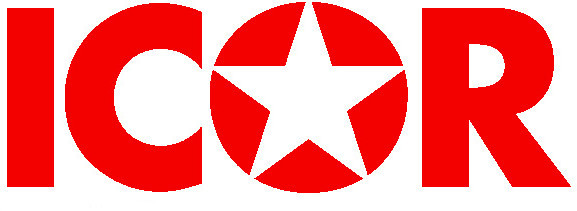Imperialist Chaos and War
Existing translations
This introduction will focus on the most important features of the world political, economic and social situation, in the light of the accumulations of imperialist chaos and war, according to its causes, internal interactions and global repercussions. It is limited to the only major characteristics of these phenomena, leaving the possibilities of detailing them for discussion.
First: The Accumulation of Imperialist Political Chaos
The most important accumulations of imperialist political chaos can be concentrated in the following:
1- With the collapse of the Berlin Wall and the Soviet Union in 1989 and 1991, the United States and NATO focused on ways to contain the Russian Federation and the group of dependent countries and try to integrate them into the alliance.
2- The Russian Federation, especially after Vladimir Putin came to power in 2000, tried to restore some of the strength of the former Soviet Union, to expand to the warm waters of the Black Sea and to maintain Ukraine's dependence.
3- The United States continued to besiege the Russian Federation and to push it further and further east, in particular to prevent it from reaching the warm waters of the Mediterranean. They worked with its intelligence tools to support the Orange Revolution in Ukraine to overthrow the Russian-affiliated regime. In this work, they aim to bring about a final break between the European Union and the Russian Federation, which they succeeded in pushing Russia to invade Ukraine on February 24, 2022.
4 - Since China's entry into the World Trade Organization in 2001, it has become the main source of manufacturing and marketing of global production chains, establishing the "silk roads" with different continents, which strengthened its position as a new economic and imperial power. But China's massive economic growth has become a concern for the United States of America and its Western allies and drives it to besiege and harass its aspirations to gobble up Taiwan, along with numerous sanctions imposed on it. for sometimes frivolous reasons, such as accusing it of imitating its industries and stealing its technologies.
5 - Among the reasons that led the United States to undermine the relations between the European Union and the Russian Federation, there is the availability of the latter on huge sources of primary resources and energy sources, which were supplied at low cost to Europe, in particular to German industry. Therefore, they felt that the disengagement between Russia and the European Union would make the latter completely dependent on the purchase of energy and its needs from the industries of the United States of America. This is what they have managed to do now.
6- The imperialist competition to monopolize the primary and energy resources of Africa has been the source of poverty of its peoples and a cause of its political and social instability. Today, Africa is experiencing brutal and growing competition between Western powers on the one hand, and China and Russia on the other, which has revived the peoples of this continent under the threat of coups. , political unrest and civil wars. The recent uprising of the Sahel countries against French imperialism and their recourse to the help of Wagner's Russian forces to protect their independence in Mali, Burkina Faso, the Central African Republic and finally in Niger, would incite France to start an imperialist war in the region to restore its influence. The war in Ukraine has become an extension of the struggle for Africa's wealth between the West and Russia.
7- The economic rise of the BRICS countries, made up of Russia, China, India, Brazil and South Africa, has posed a new imperial challenge to Western powers. The BRICS group has achieved levels of economic growth that exceed those achieved by the Group of Seven. The BRICS countries have also recently announced their intention to divest from the dollar and peg their new currency to gold.
8- The Sino-Russian rapprochement and the Gulf States also prompted China's successful mediation in the reconciliation between the Gulf States on the one hand and Iran on the other, which confused the calculations of Israel and the United States of America regarding the blocking of Iranian nuclear tests. This new bloc seeks to break away from American hegemony and to get closer to the BRICS group, which threatens American imperialist hegemony in the world.
Second: the chaos of global economic crises
1- The capitalist world has been living since the 1970s in the shadow of a chronic structural economic crisis, which translates into the crisis of stagflation, due to the surplus of production and the organic composition of capital, which leads to the deterioration of the rate of profit. The main objective of all the economic and social policies adopted by the imperialists is to try to circumvent this crisis which threatens the capitalist system as a whole. In this context, policies of globalization of production and marketing and various neoliberal mechanisms have been adopted to ensure global production chains by exploiting the cheap labor of the countries of the South. The International Monetary Fund and the World Bank monopolize the tools to impose these policies on a global scale, in particular by imposing structural adjustment policies.
2- The successive cyclical crises since the 90s have proven the total failure of neoliberal policies and economic globalization in the face of the chronic crisis of stagflation. Excess production is piling up and the deterioration in the rate of profit is worsening, with the interest rate peaking negatively in 2018. Various economies are also living in a spiral of excessive indebtedness and money printing with no real growth , which described it as a zombie economy. The specter of a general capitalist crisis that looms large on the horizon may exceed in its violence the crisis of 1929.
3- The Covid-19 crisis, the exceptional closure measures in 2020 and the war in Ukraine in 2022 caused an additional shock for the capitalist economy, while they did not allow sufficient destruction of production excess. debt, money printing, a global arms race, the escalation of imperialist tensions and its aspiration to deal with its crises... each imperialist sets out to solve its crises at the expense of others, which reminds us the conditions that preceded the First and Second World Wars.
4- The various crisis management policies from the 90s until today have only paved the way for larger and more serious crises. Today, central banks try to cope with inflation by raising interest rates, and this continuous increase causes the recession, while the recession itself is a source of financial crisis, which requires a new injection of liquidity, and therefore more indebtedness, which has become astronomical, which is an additional factor of inflation. The chaos of the crisis of capitalism has become a vicious circle.
5- In the light of the war in Ukraine, most capitalist economies have turned to the war economy. US imperialism forces Western countries to send their weapons to Ukraine, where they will be destroyed, hence the need to place direct orders for the purchase of new advanced weapons of destruction, which in turn revives the industries of imperialist weaponry considered economically unproductive and sterile.
6 - The destruction by war of buildings, infrastructures, technologies and other resources is a great waste of energy and means of production. Therefore, rebuilding these facilities will lead to more carbon emissions. The reckless use of highly destructive weapons leads to the pollution of soil, water and air, with a constant threat that the whole region could once again become a source of atomic radiation, whether as a result of the bombardment nuclear power plants or the deliberate use of nuclear weapons. War also has an environmental impact on a global scale, making it more difficult to meet emission reduction targets.
Third: the chaos of political conflict between superstructure and infrastructure
1- The growing scale of imperial chaos and the difficulty in finding solutions to curb the slide towards the general crisis of capitalism are fueled by the right-wing tendencies of governments in many countries, which perpetuate political divisions between different bourgeois factions. The storming of the Capitol building on January 6, 2020 revealed the extent of political division within American society. . This also happened in the Brazilian elections, in terms of the political division between supporters of Lula and Bolsonaro. Divergences have also emerged between warring political factions within Russian society, and growing opposition to Putin's policies has emerged, particularly from ultra-nationalist groups, as Putin tries to deal with pressures. from the right by constantly threatening to escalate war with the West. In China, the divisions within the Chinese bourgeoisie are also becoming more apparent, notably between the pro-Xi Jinping faction, which favors the strengthening of central state control over the entire economy, and competitors more closely. linked to the development potential of private and foreign capital.
2- These contradictions do not prevent the ruling bourgeois class from shifting the effects of the crisis onto the shoulders of the working class, nor do they prevent it from facing the growing class struggle. Even when the bourgeoisie is unable to control its own internal divisions, the working class still threatens to be drawn into the competing factions of its class enemy.
3 - Faced with the over-excitement of the world economic crisis, the working class has begun to develop its class consciousness and its forms of confrontation with the inevitable deterioration of its living conditions and rejoices more in working in a unified international movement. Here is the dynamism of the ICOR organization and the united front against imperialism and fascism, as one of the introductions to build self-defense tools for the local and global proletariat. Under these two organizations, the political and economic struggles waged by revolutionary parties and organizations can constitute a refinement and fusion of local and world class consciousness, as Comrade Lenin courageously called it in 1902 within the Socialist Party. Russian Democrat in his “what to do? »
4- The struggles of the proletariat that have emerged in Britain since the summer of 2022 confirm the will of the proletariat everywhere to confront the disastrous bourgeois policies. The labor movement in France, in the face of the French government's attack on pensions, has also expressed the continued will for continued struggle, especially after the yellow vests movement. These are just examples of the class struggle that is beginning to flourish among proletarians in many countries.
5. Faced with the ordeal of war, one could not expect a direct response from the working class against it. Historical evidence confirms that the working class does not act effectively against war, but nevertheless acts against its disastrous effects on their daily lives. Therefore, one of the urgent tasks of revolutionary organizations is to develop awareness and open resistance to the growing attacks of capital in the light of the current war. During wars, the bourgeoisie uses all ideological methods to shift the weight of the crisis onto the shoulders of the working class. The insistence of revolutionary organizations to combine the return of workers' struggle with the worsening of the world economic crisis would objectively change the foundations of the class struggle at the local and global levels.
Document Actions




